Abstract
OBJECTIVES: This is a study of the effects on prenatal care and birth outcomes of Florida's July 1989 expansion in the Medicaid income eligibility threshold for pregnant women. METHODS: Concurrent and longitudinal comparisons were performed with matched birth and death certificates, hospital discharge data, Medicaid eligibility records, and records from county health departments for women giving birth from July 1988 to June 1989 (n = 56,101) or in calendar year 1991 (n = 78,421). Measures included amount and timing of prenatal care and rates of low birthweight and infant deaths. RESULTS: The Medicaid expansion led to greater access and improved birth outcomes. For example, the rate of low-birthweight infants among low-income women without private insurance fell from 67.9 to 61.8 per 1000, while it remained unchanged for low-income women with private insurance. Women in the expansion group who used county health departments had fewer low-birthweight infants than those using other delivery systems. CONCLUSIONS: The benefits from the Florida expansion appear to be greater than those reported for other states. The role of the public health delivery system may account for some of Florida's success.
Full text
PDF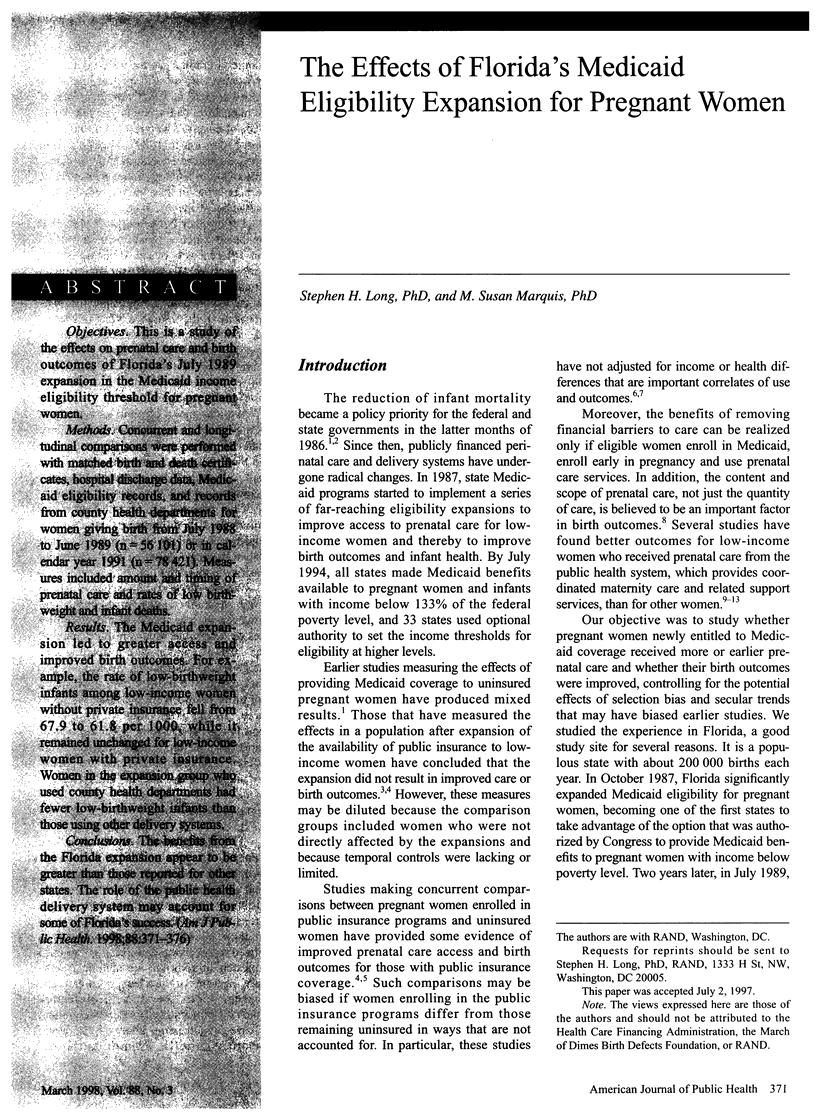
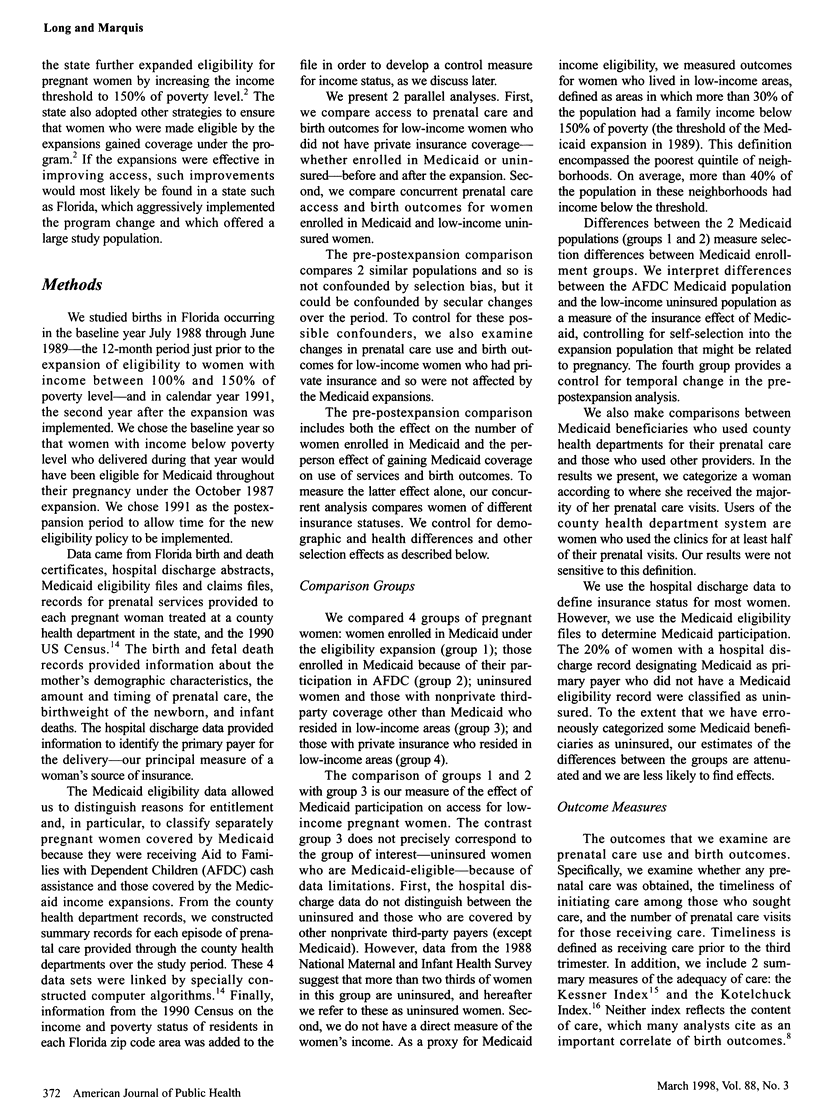
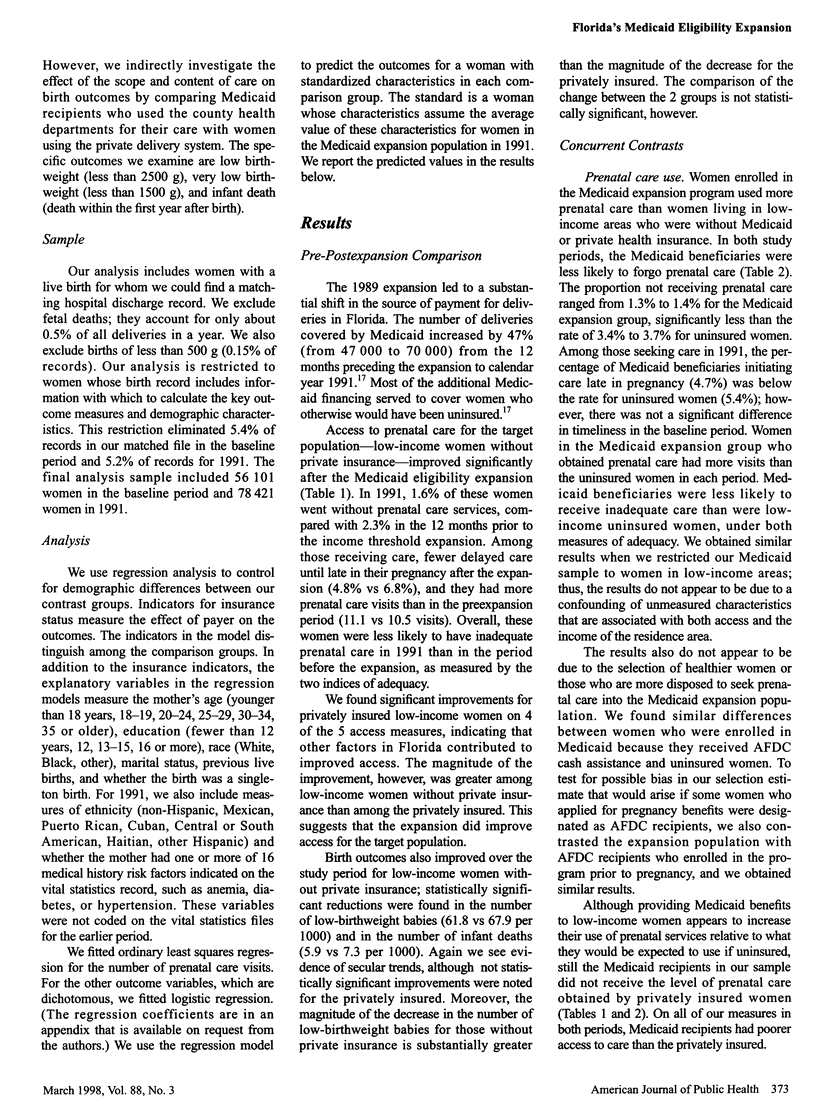
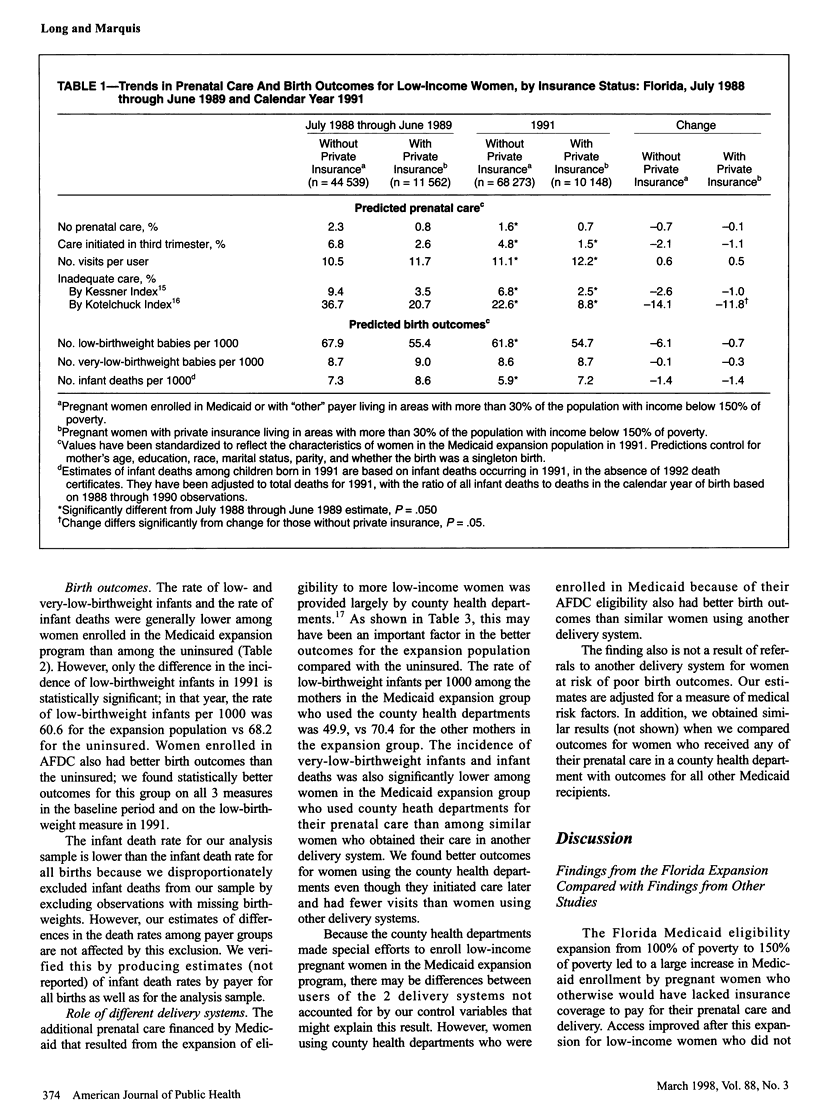
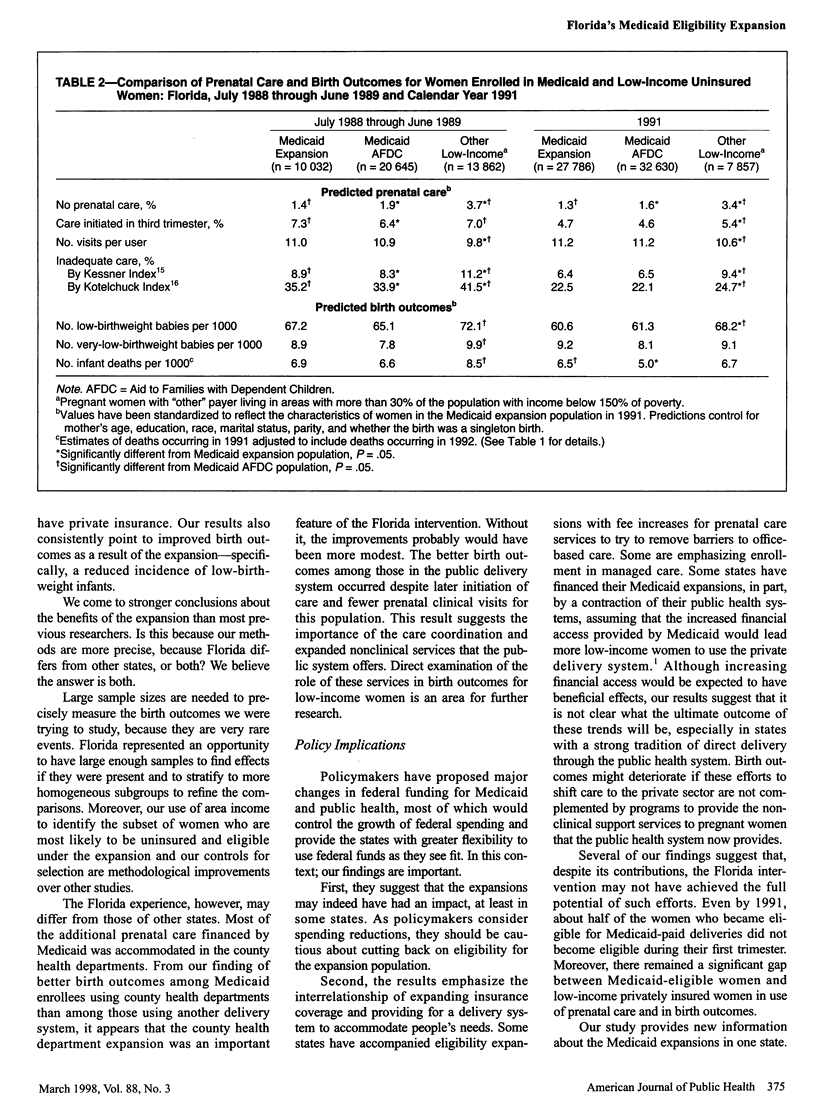
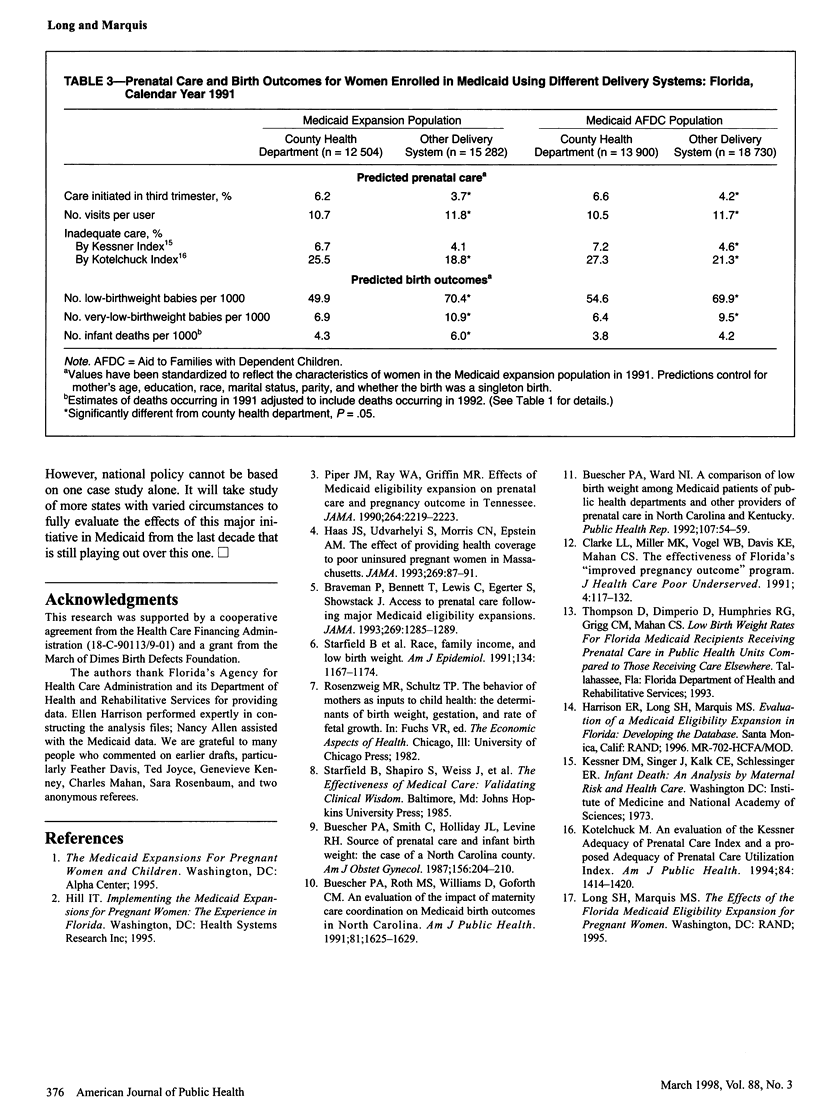
Selected References
These references are in PubMed. This may not be the complete list of references from this article.
- Braveman P., Bennett T., Lewis C., Egerter S., Showstack J. Access to prenatal care following major Medicaid eligibility expansions. JAMA. 1993 Mar 10;269(10):1285–1289. [PubMed] [Google Scholar]
- Buescher P. A., Roth M. S., Williams D., Goforth C. M. An evaluation of the impact of maternity care coordination on Medicaid birth outcomes in North Carolina. Am J Public Health. 1991 Dec;81(12):1625–1629. doi: 10.2105/ajph.81.12.1625. [DOI] [PMC free article] [PubMed] [Google Scholar]
- Buescher P. A., Smith C., Holliday J. L., Levine R. H. Source of prenatal care and infant birth weight: the case of a North Carolina county. Am J Obstet Gynecol. 1987 Jan;156(1):204–210. doi: 10.1016/0002-9378(87)90239-0. [DOI] [PubMed] [Google Scholar]
- Buescher P. A., Ward N. I. A comparison of low birth weight among Medicaid patients of public health departments and other providers of prenatal care in North Carolina and Kentucky. Public Health Rep. 1992 Jan-Feb;107(1):54–59. [PMC free article] [PubMed] [Google Scholar]
- Clarke L. L., Miller M. K., Vogel W. B., Davis K. E., Mahan C. S. The effectiveness of Florida's "Improved Pregnancy Outcome" program. J Health Care Poor Underserved. 1993;4(2):117–132. doi: 10.1353/hpu.2010.0445. [DOI] [PubMed] [Google Scholar]
- Haas J. S., Udvarhelyi I. S., Morris C. N., Epstein A. M. The effect of providing health coverage to poor uninsured pregnant women in Massachusetts. JAMA. 1993 Jan 6;269(1):87–91. [PubMed] [Google Scholar]
- Kotelchuck M. An evaluation of the Kessner Adequacy of Prenatal Care Index and a proposed Adequacy of Prenatal Care Utilization Index. Am J Public Health. 1994 Sep;84(9):1414–1420. doi: 10.2105/ajph.84.9.1414. [DOI] [PMC free article] [PubMed] [Google Scholar]
- Piper J. M., Ray W. A., Griffin M. R. Effects of Medicaid eligibility expansion on prenatal care and pregnancy outcome in Tennessee. JAMA. 1990 Nov 7;264(17):2219–2223. [PubMed] [Google Scholar]
- Starfield B., Shapiro S., Weiss J., Liang K. Y., Ra K., Paige D., Wang X. B. Race, family income, and low birth weight. Am J Epidemiol. 1991 Nov 15;134(10):1167–1174. doi: 10.1093/oxfordjournals.aje.a116020. [DOI] [PubMed] [Google Scholar]


